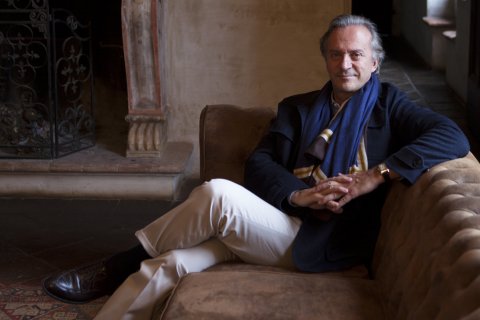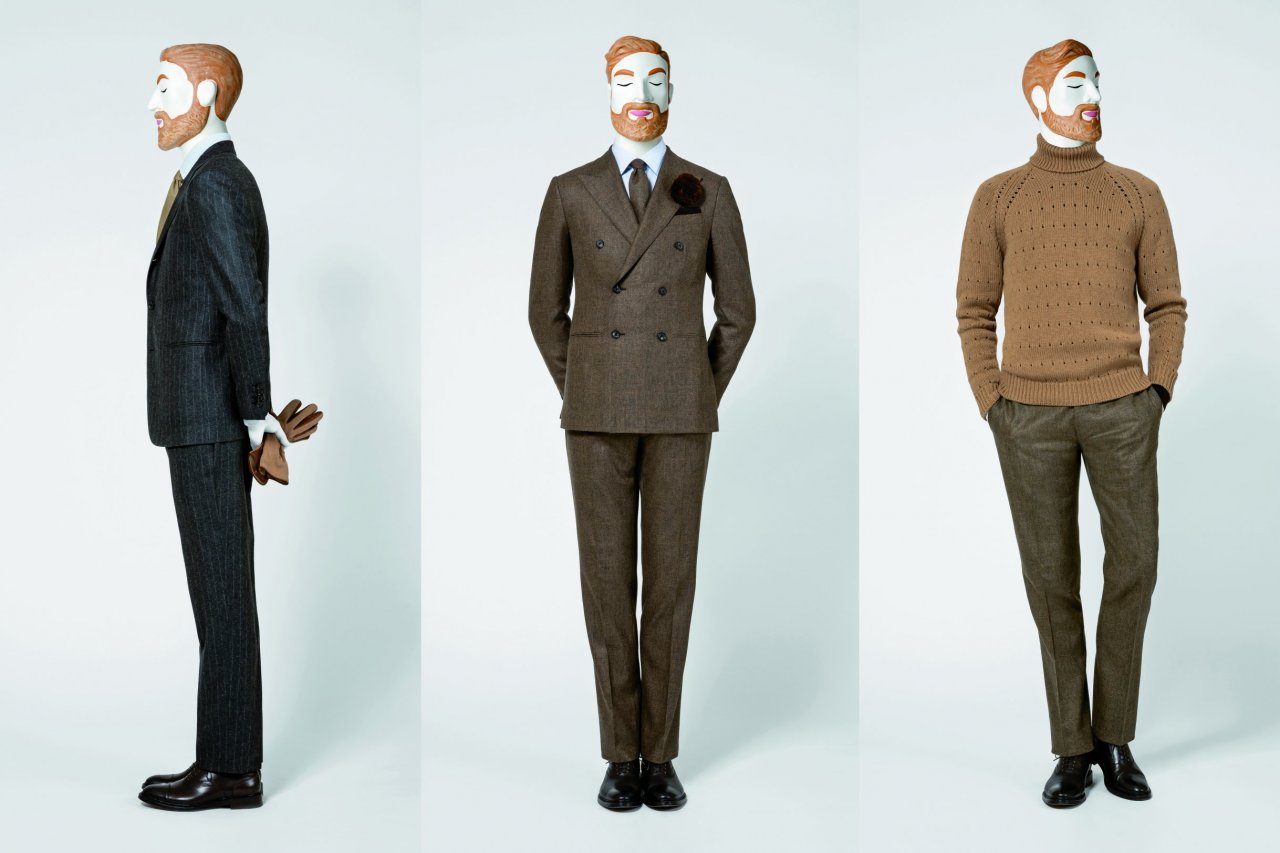If it's often said that cockroaches will survive the coming nuclear apocalypse, a case could also be made for the survival potential of Camelus bactrianus. About 1.4 million of these twin-humped camels call northern Asia home; many can be found knocking about the Gobi Desert, a place of 90-mile-per-hour winds where the temperature swings from minus 40 to plus 50 C. The climate is so inhospitable that nuking might actually improve things. Yet in spite of all, the camels amble on—partly because their hair has marvelous thermal insulation properties.
Camel hair also has history. Between the two world wars, a loose, unstructured, camel hair polo coat was almost a uniform for anyone living the F. Scott Fitzgerald life. According to Esquire's history of men's fashion, from the mid-1920s to the mid-1930s, "no other coat had [the same] fashion impact." Flung nonchalantly over the shoulders for added panache, it quickly made the transition from something worn by sportsmen between chukkas to outright glamour garment.
"I think men have long been fascinated by camel hair," says Umberto Angeloni, the dapper, 64-year-old CEO of Italian menswear brand and manufacturer Caruso, and the man behind a very modern rethink of camel hair. "It's masculine but warm and friendly." The original camel coat, though, was also very heavy; in time, Angeloni says, it "became the grandpa coat—nice to own but seldom worn."
Related: 19th-century machine still making socks built to last
Yet Angeloni was convinced there was an element of romance in the fiber. "There's nothing romantic about a sheep or goat, but the camel is different: One thinks of Lawrence of Arabia and Marco Polo, of adventure and exotic lands." Angeloni, a former economics professor, is also shrewd, explaining that camel hair is 30 percent cheaper than cashmere. The only difficulty was making it relevant to 21st-century lifestyles.
So Angeloni went to Italy's leading fiber and fabric expert, Pier Luigi "P.G." Loro Piana. Long before becoming a luxury brand that doubles as Italy's answer to Hermès, Loro Piana was a cloth mill belonging to P.G.'s family; today, it continues to make many of the most precious and innovative fabrics on the market. This is largely thanks to the genius of P.G., a man who views life through the prism of fibers: I have a suspicion that when he looks at any beast, be it camel, dog or an obscure breed of cattle, he doesn't see an animal but rather imagines what type of cloth he could weave from its hair.

"P.G. told me," Angeloni says, "that he had been collecting the finest camel hair for decades, but there was little demand for it. I asked, 'Do you think it is possible to make a fabric that is light but that still resembles camel and that we can make a suit from?' P.G., who is the most intelligent fabric man in Italy, got intrigued and started experimenting."
The resulting fabrics, woven exclusively for Caruso and marketed under the name Gobi Gold, avoid the bulky nap that has traditionally characterized camel hair cloths. Instead, Loro Piana has created two suit fabrics: a worsted, available in Prince of Wales check or chalk stripe, and a lighter-weight, 55 percent camel, 45 percent Super 170's wool flannel, in solid colors; this, says Angeloni, is "ideal for pants." There is also a novel "double" camel that sandwiches a microlayer of air for extra insulation and is suitable for technical outerwear. This enables a 21st-century take on the original sports coat, as well as lighter-weight versions of traditional overcoats.
The real triumph has been to make camel for summer wear. "We have mixed [the fiber] with silk," Angeloni says, "which gives it a little shine—and with linen, which is very crisp and resilient to creases." Angeloni has also brought out a range of camel knitwear; by next winter he will even offer a camel hair velvet.
At the root of this fiber's versatility is its length. "A single camel hair can be as fine as cashmere and up to 12.5 centimeters long, whereas a cashmere hair is a maximum 4 or 5 centimeters long," Angeloni says. "A longer fiber can be twisted more times, giving the resulting thread greater elasticity and crease resistance. And coming from animals that live in the Gobi, it insulates you from heat or cold." Gobi Gold seems to have almost miraculous qualities. I just hope that I never need to test its resistance to nuclear attack.
Read more from Newsweek.com:
- Elegant yet tough: Humidors for the active aficionado
- Humble origins to classic footwear, espadrilles endure
- Keep calm and carry Louis Vuitton



















